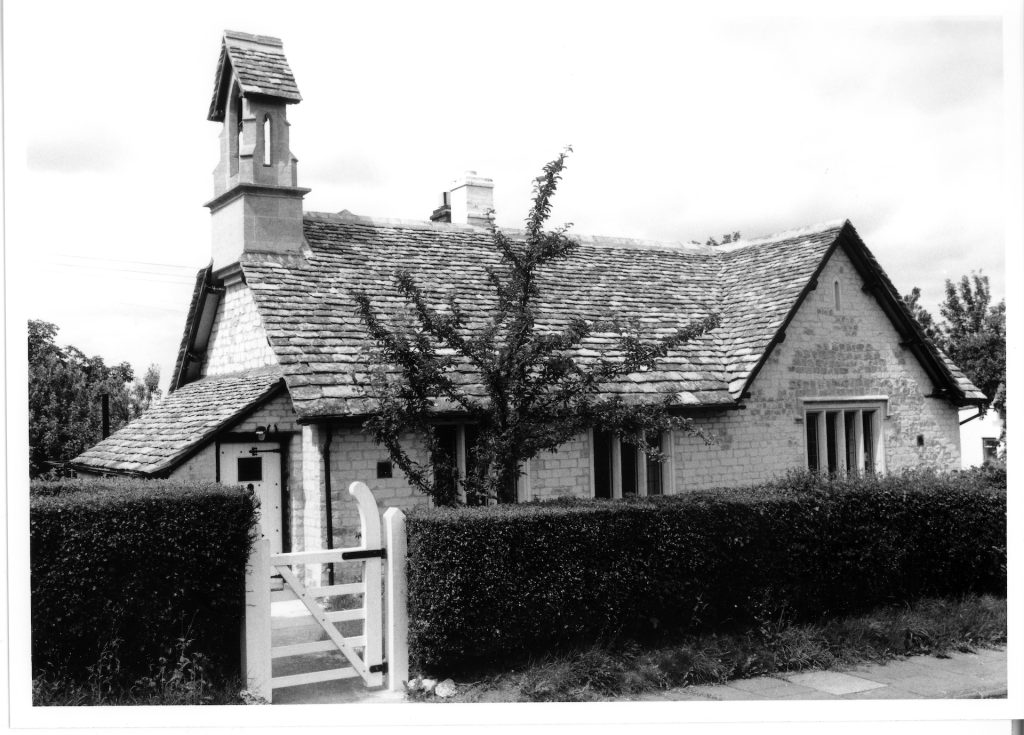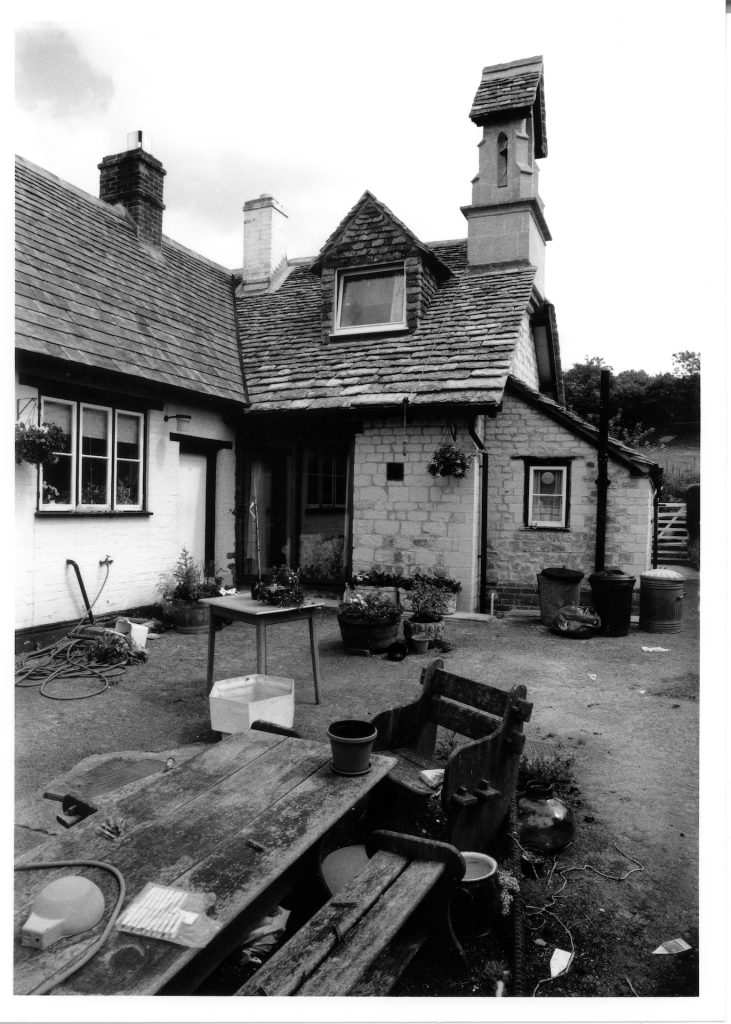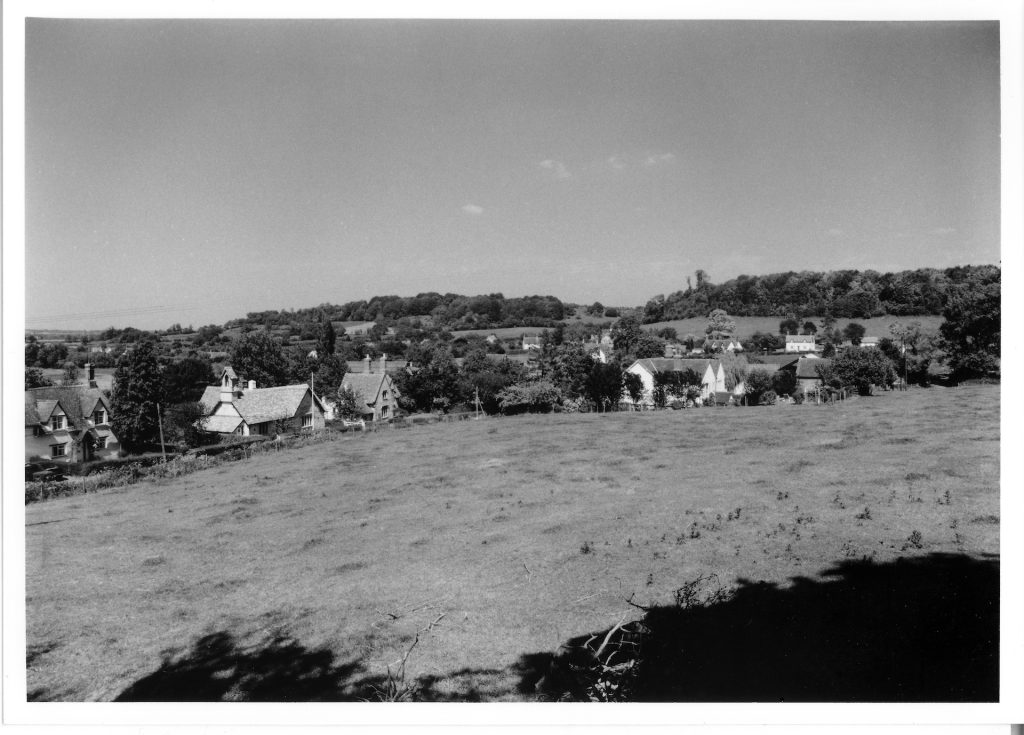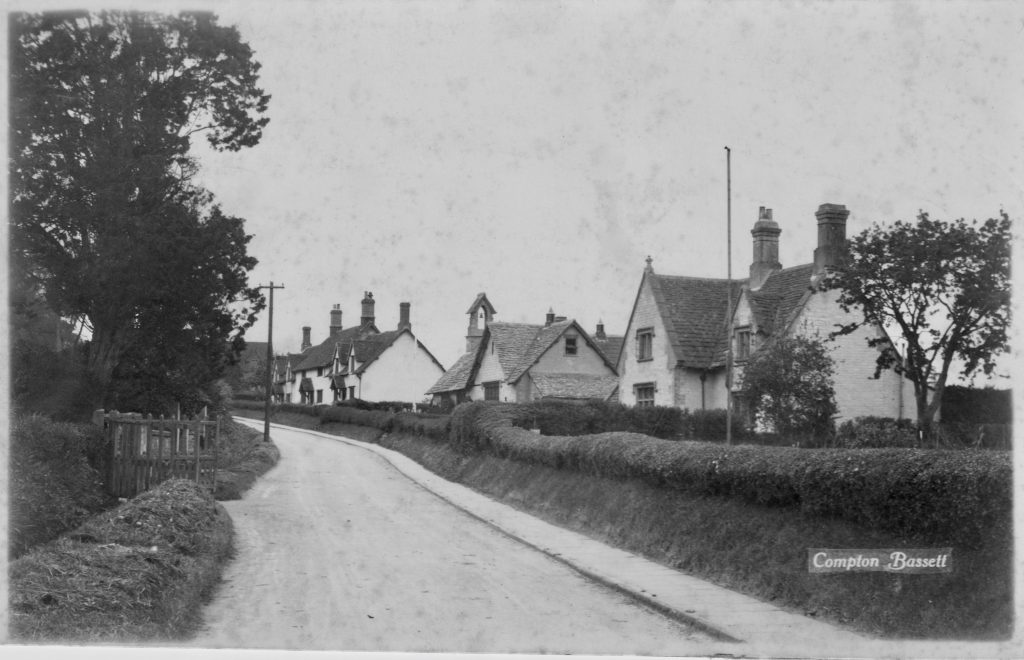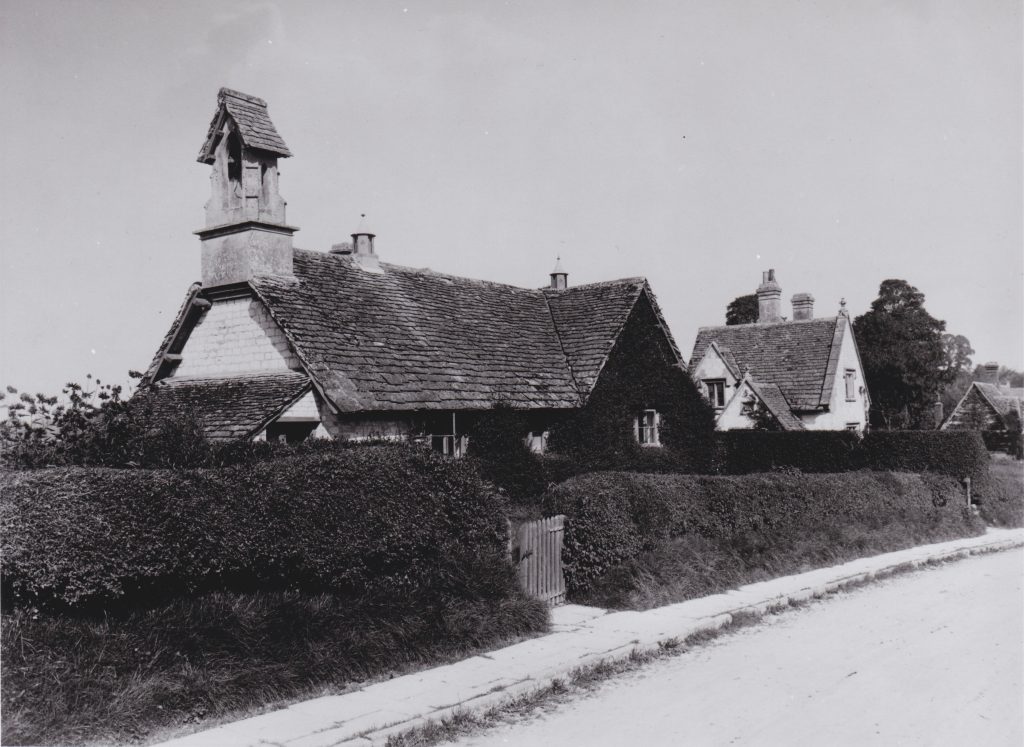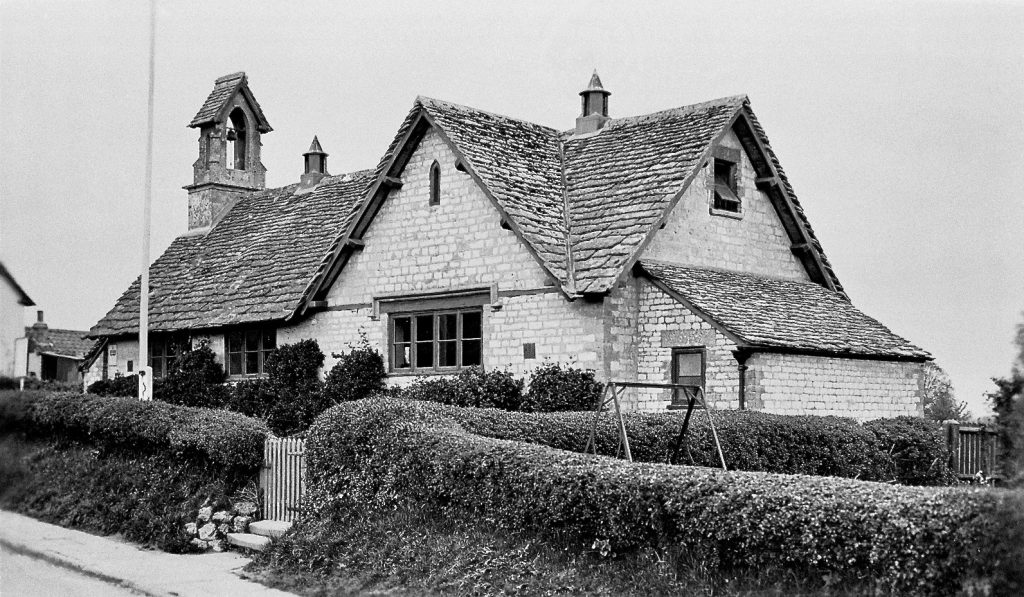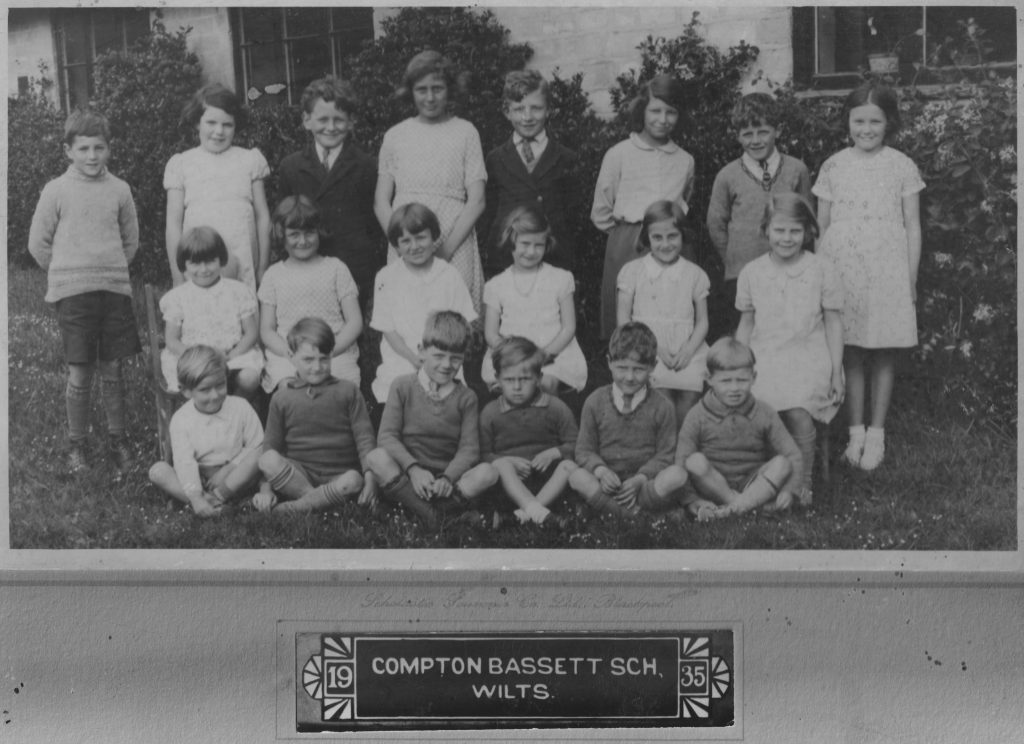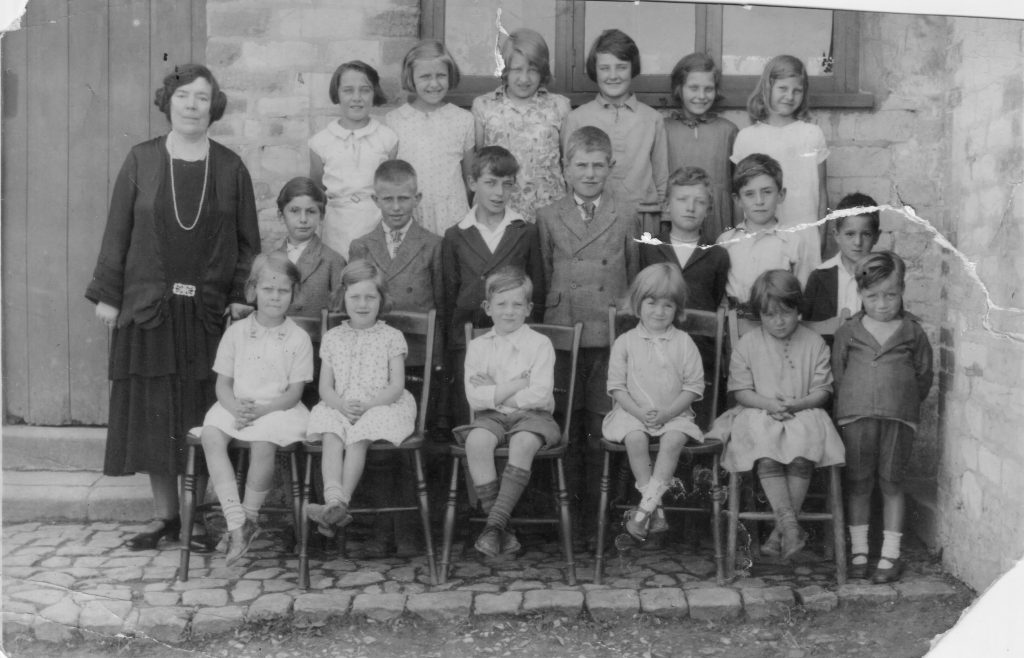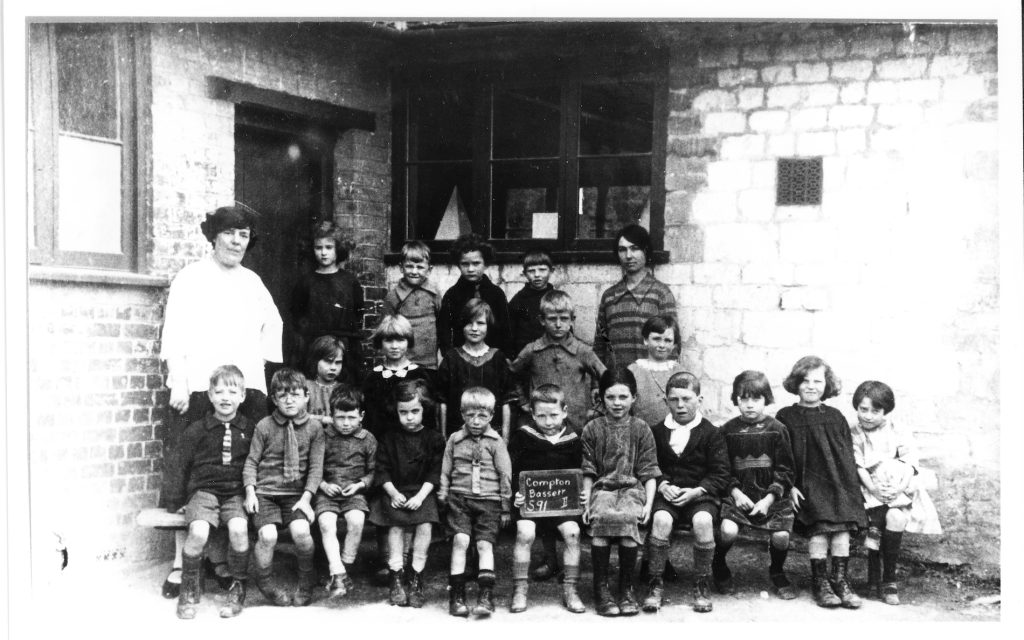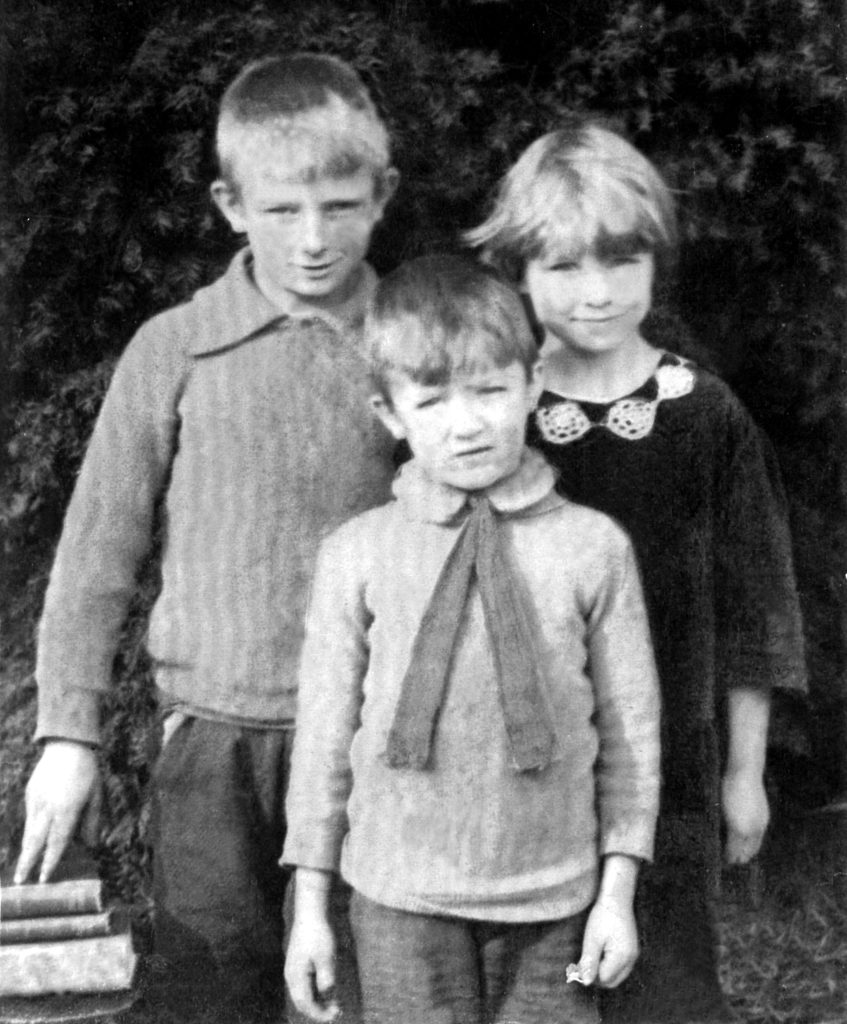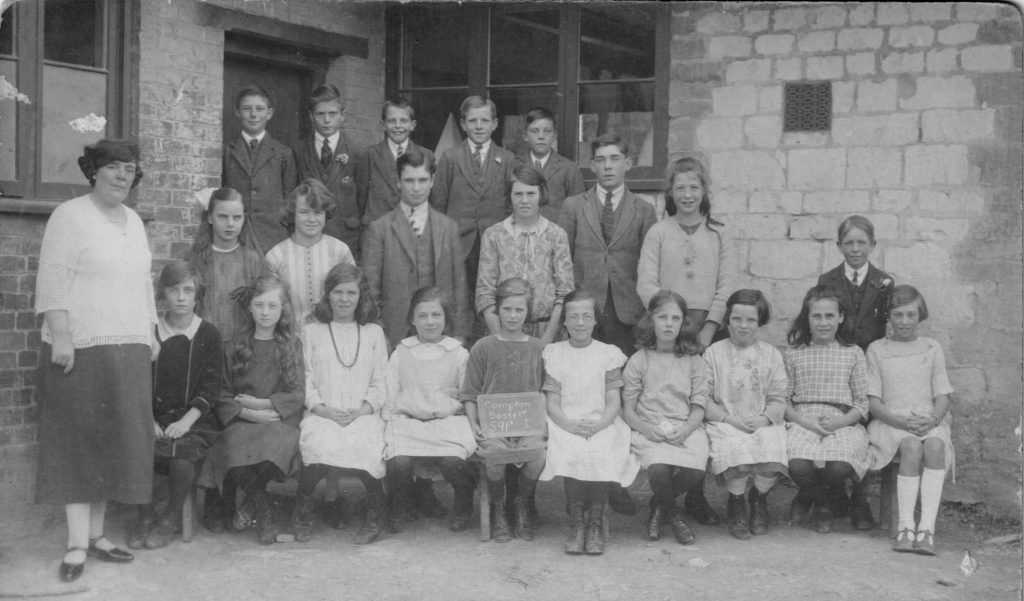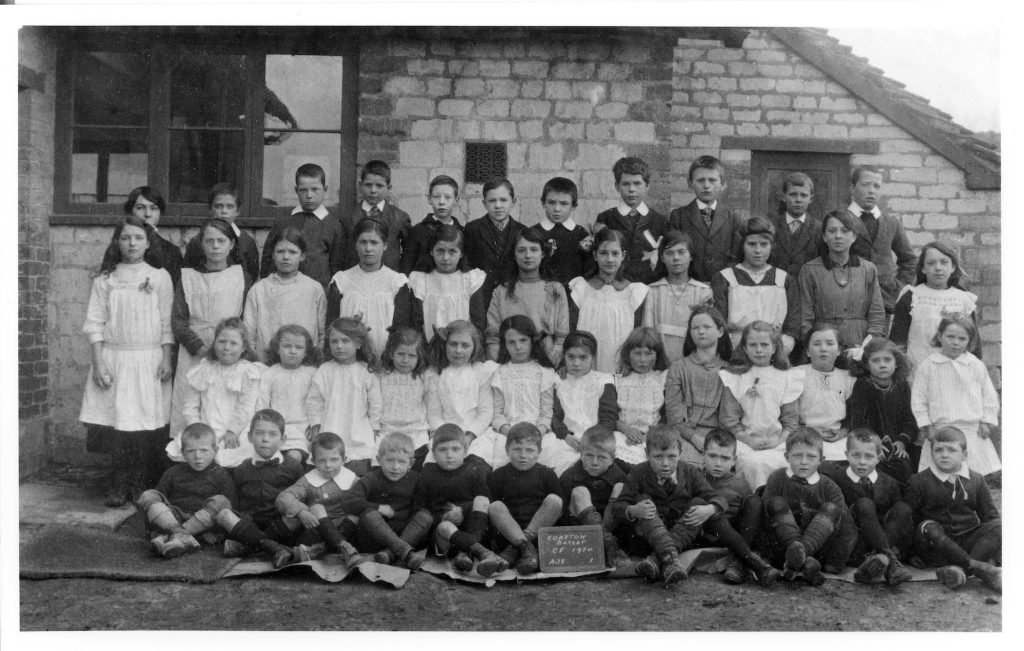Built in 1854, the new National school replaced several small schools that had existed in the parish since the early 18th century. A school teacher’s house was added next door a couple of years later; both are in the Walker Heneage estate cottage vernacular. Attendance at the new National school was around 50–60 in the latter half of the 19th century and children were usually separated into two age ranges. By 1858 the school was described as ‘picturesque with a commodious schoolroom’ when H.M. Schools Inspector (HMI) William Warburton also wrote that the children were taught remarkably well with music especially good. The schoolroom had a wood floor and parallel desks while the master’s residence had been “lent” by the Walker Heneage family. Following an inspection in 1893 new separate toilets were built for both boys and girls, one at each end of the building. Inspectors commented on the varying standards of education over the years. An example of this came in 1906 when control was handed over to Wiltshire Council and a new schoolmistress and assistant were hired; they found that the children’s work was much below average. Illness was frequently recorded: diphtheria, influenza, impetigo, whooping cough, chicken pox, measles, mumps and scarlet fever all caused much absenteeism or even school closure; head lice was a frequent problem. The rector called 3 or 4 times a week to give scripture classes and there were regular visits by Major and Mrs Walker Heneage. Haymaking and harvest time saw the school close for five weeks as well.
The list of subjects for object lessons to be taught to the infant class during 1894 was – a candle, cotton, orange, cow, tiger, dog, garden, glass, cat, coal, the oak, sheep, pig, water, lead, elephant, coffee, basket, the grocer. On Christmas Day 1896, teacher Herbert Bates resigned after 24 years. Teachers came and went over the next few years and in March 1903 the schoolmistress Sarah Stratton died suddenly at the age of 25. She had been taken ill and died in a carriage on her way to Bath hospital. An inquest found that she had a perforated ulcer. Teachers frequently resigned and on one occasion an assistant teacher failed her exams so could not continue. Matters began to improve generally at the school and by 1909 it was rated the best attended school in the Calne district. Major and Mrs Hornsbury-Drake, who now were renting Compton House, took an active interest in the school and pupils. All the children were invited to Christmas Eve parties at the house and an annual summer party on the lawns.
In May 1915 a pupil was given two strokes of the cane across his back for disobedience, in consequence of which the teacher received a threatening letter from the pupil’s mother. During July, the Great War pupils received a lesson on the French Flag, after which the children sang The Marseillaise and six shillings and sixpence were contributed to the Flag Fund. In October 1917 a closure allowed children to pick blackberries for the Army and Navy, 52lb was sent to the agent on 15th October and a further 63lb on October 22nd. More holidays were granted, two weeks in June 1918 for the hay harvest, and four half days holiday in September and October, when a total of 436lb of blackberries were collected.
On July 19th 1919 ‘Joy Day’, saw an assembly at school at 1.30 to salute the flag erected on the lawn. Patriotic songs were sung, and then all marched to the field where sports were held and the children given tea. The flag and pole were presented in recognition of peace by Mrs. Hornsby-Drake. On 31st July the Headmaster of Evercreech Boys School gave a lesson to the pupils on breaking, raising and lowering the flag on the pole, also instruction on how to tie the correct knots on the rope. One week’s holiday was granted on October 17th for ‘Peace Week’. On November 11th, Armistice Day, the children went on the lawn to see the flag lowered to half-mast. After a hymn two minutes silence was kept in memory of the glorious dead – according to the wishes of King George V. ‘Now thank we all our God’ was sung, and an address given by the Rector was followed by the National Anthem. The flag was hoisted until the end of the day.
Photographs of the children were taken on February 26th 1920. A Social Evening was held in May, at which the children sang and recited ‘Daffodils’, and a collection taken realised £2.14s.0d. which was sent to Save the Children Fund. November 11th Armistice Day was observed and the flag was flown at half-mast. After two minutes silence a talk was given regarding the burial of the Unknown Soldier.

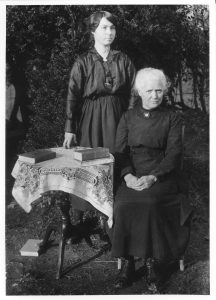
In April 1924 only 28 children were present, the number on the register being 47, sickness was the given reason and in November the dentist spent 3 days attending to children. In July 1925 HMI reported that the children were extremely apathetic and unresponsive in oral work, few were able to talk sensibly about what they had read. Varying standards continued but by 1930 there had been an improvement in oral and handy work, though a falling off in English, Arithmetic, History and Geography.
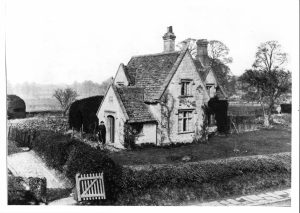
September 11th 1939 saw 53 evacuees arrive in the village. The village hall was used as an extra classroom, there were 85 children, the headmistress and 4 assistants. On October 18th one table, two easels and 17 desks were delivered to the village hall. School hours were adjusted to allow teachers to catch buses. By April 1940 the number of evacuees had dropped to 18. The Whitsuntide holiday was cancelled. Gas masks were fitted and regularly inspected. In July the Summer Vacation Scheme was implemented and in August the windows and skylights were splinter-proofed with muslin. A long drought in 1940 caused a shortage of milk and none was delivered to the school for one week during September. At this time The Home Guard were using the school room. February 1941 saw closure of the school because of chicken pox.
Outings were occasionally organised for pupils; in September 1945 a visit was made to Bristol Zoo and Severn Beach, while 1946 started with a trip to see a pantomime in Swindon and a day outing to Poole in summer.
Numbers attending the school steadily declined after the war and on 23rd March 1964 the school closed.
Document Source
Witshire & Swindon History Centre, Chippenham.
